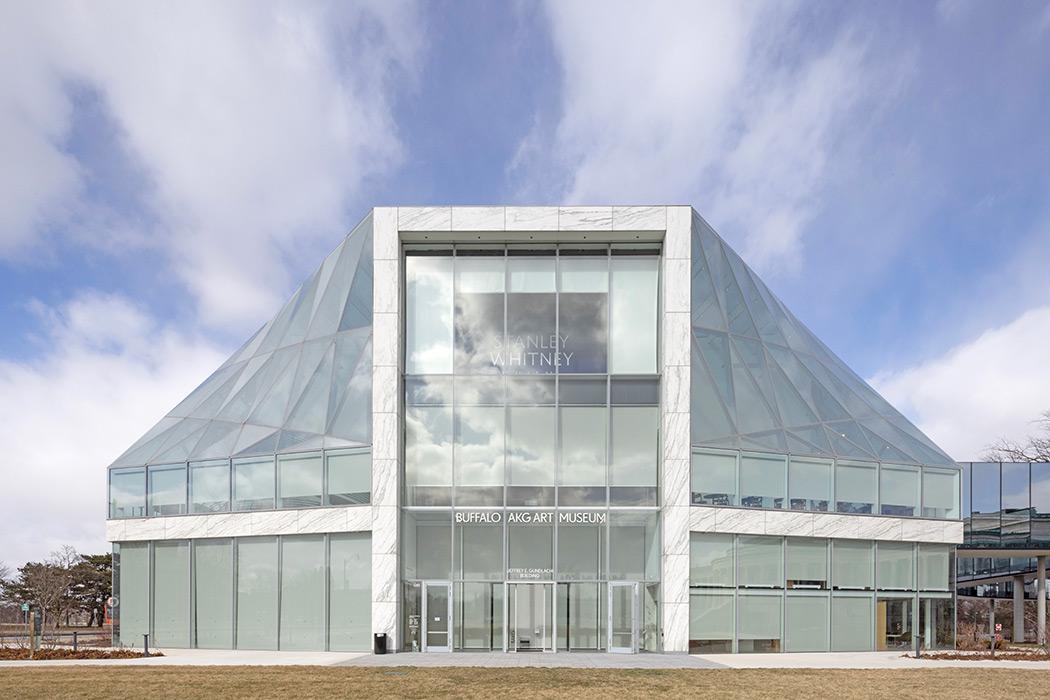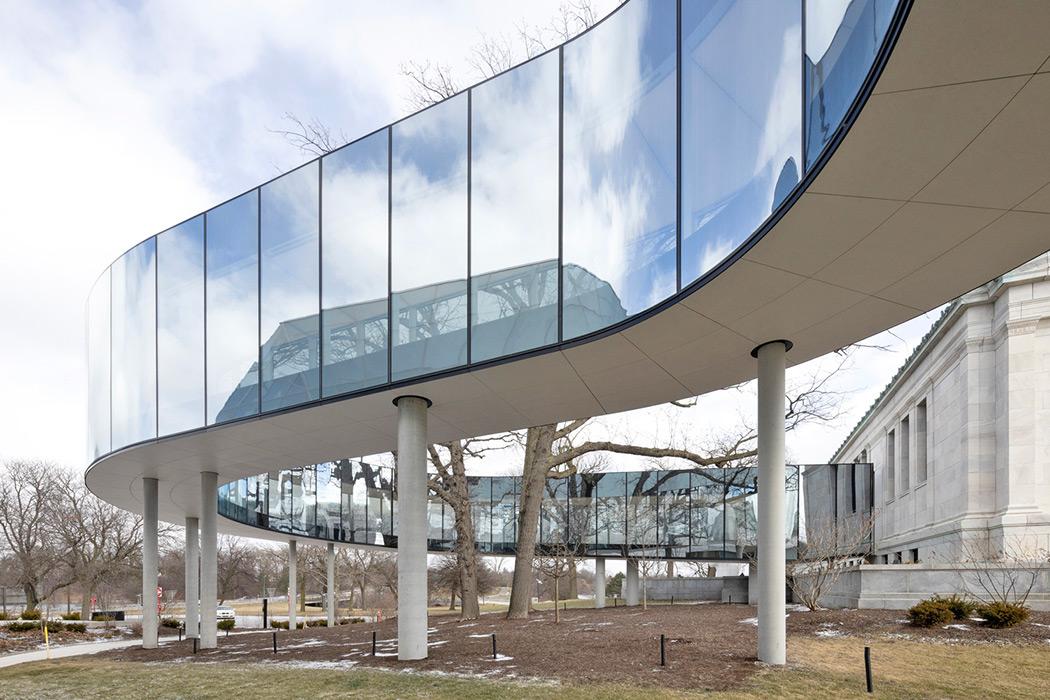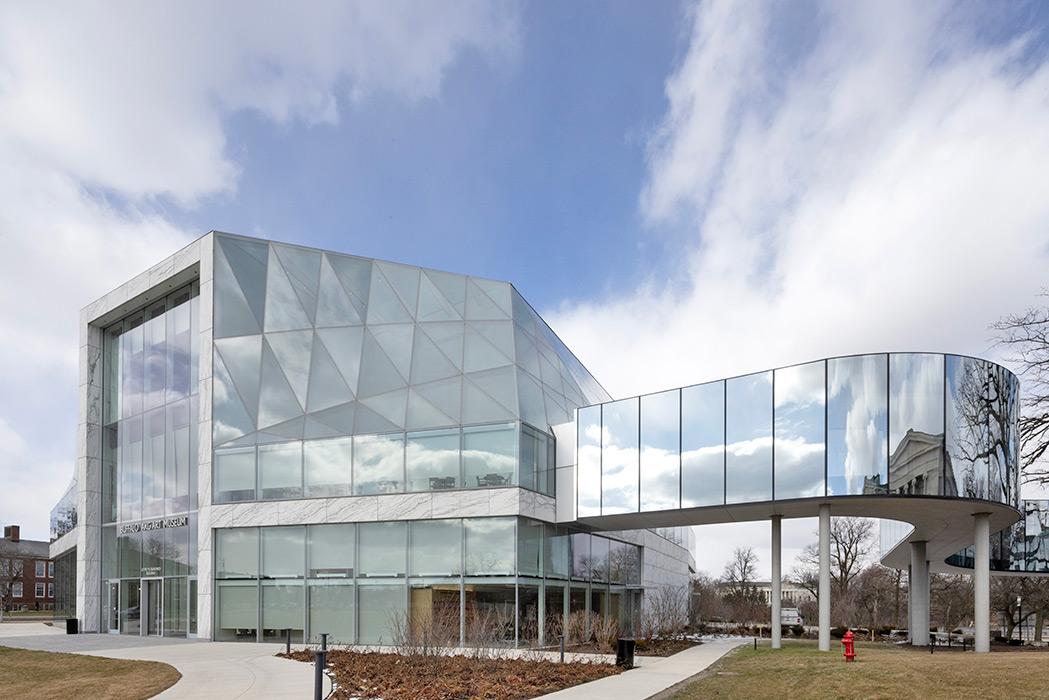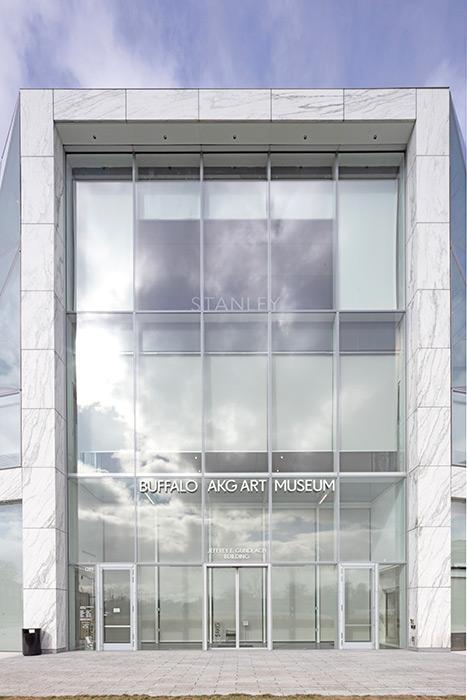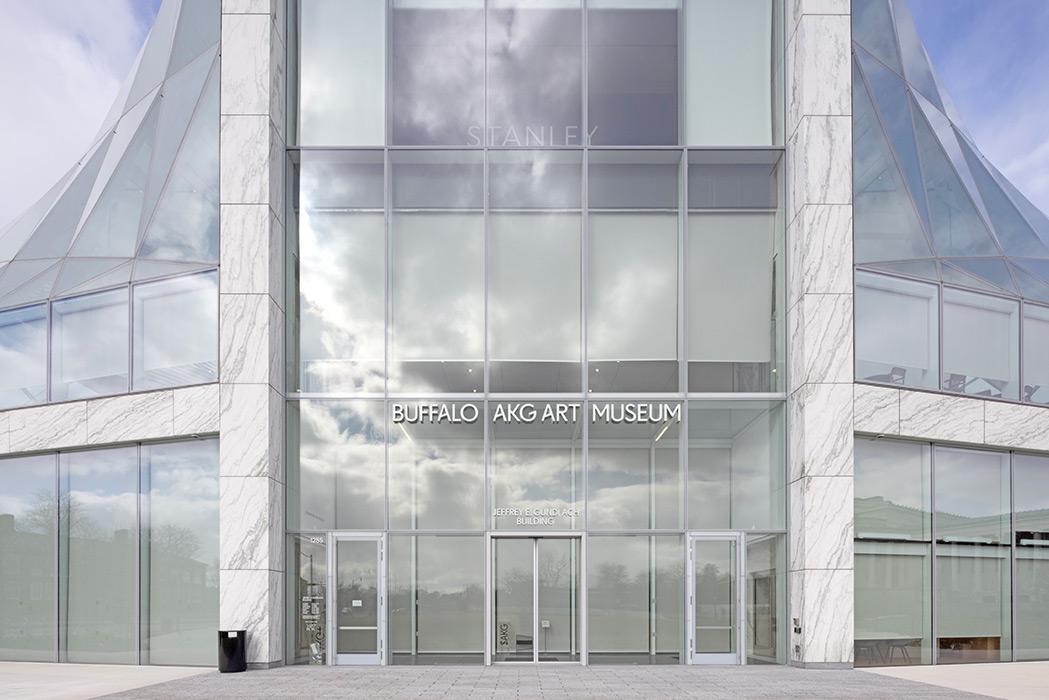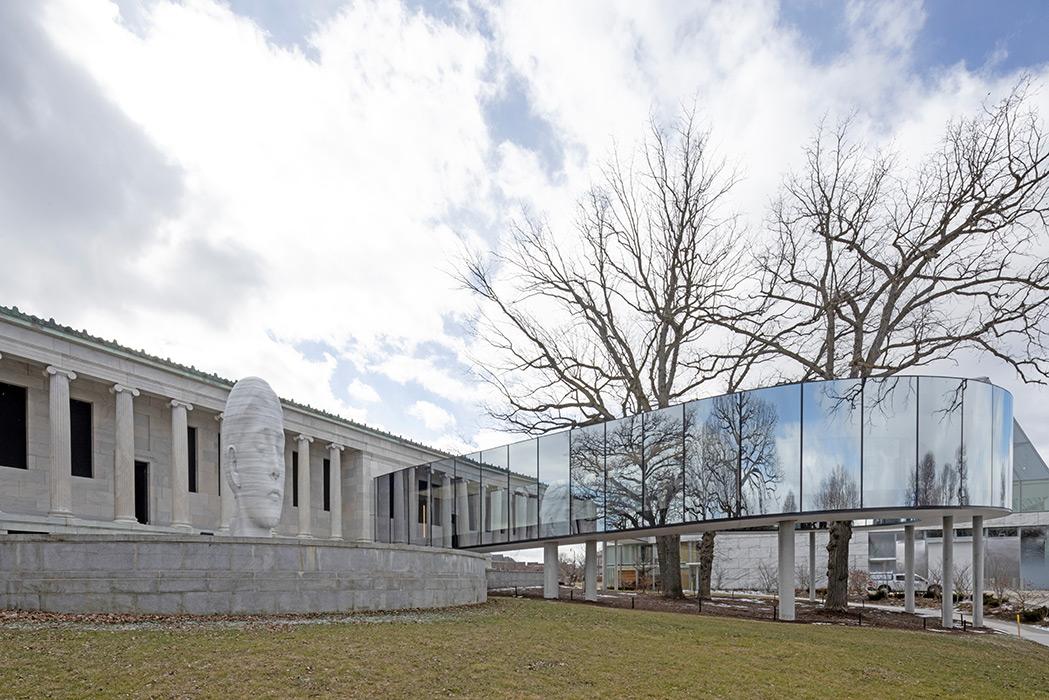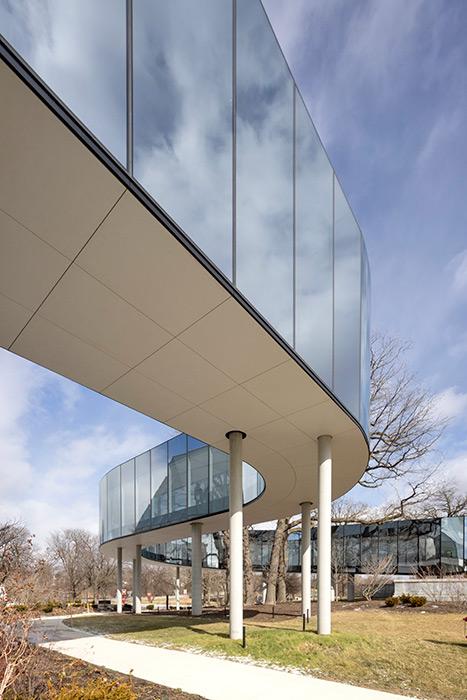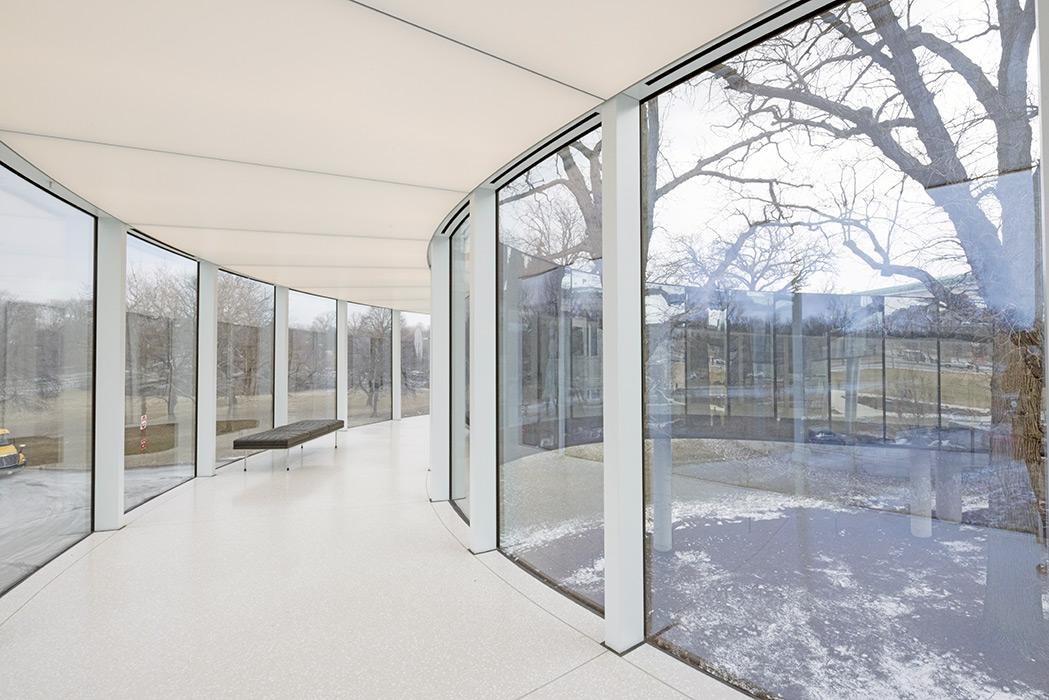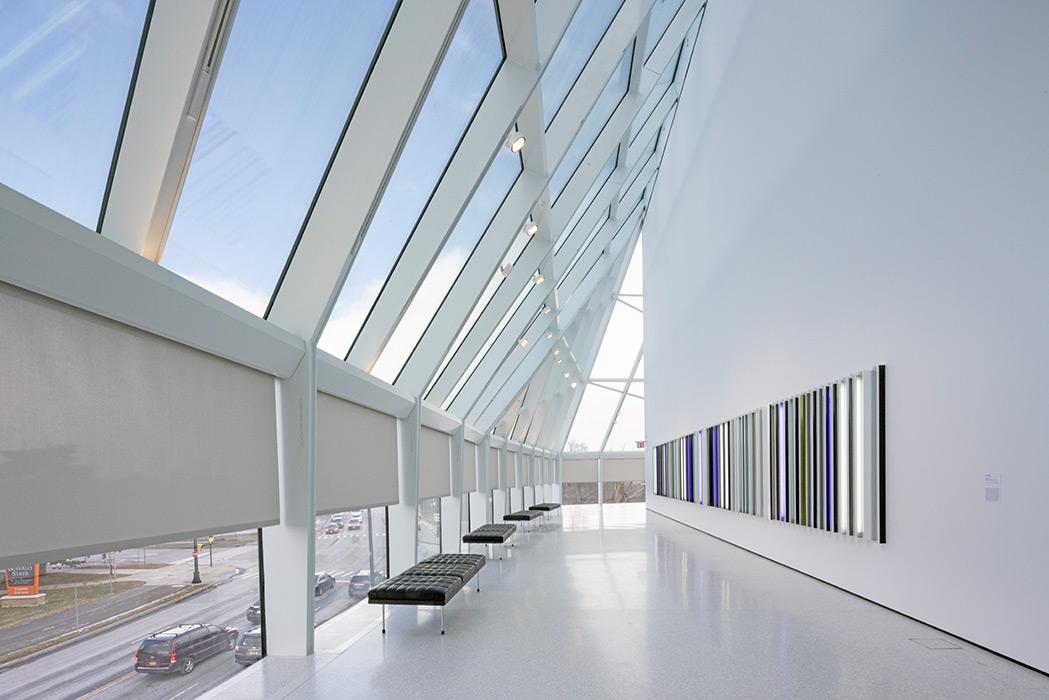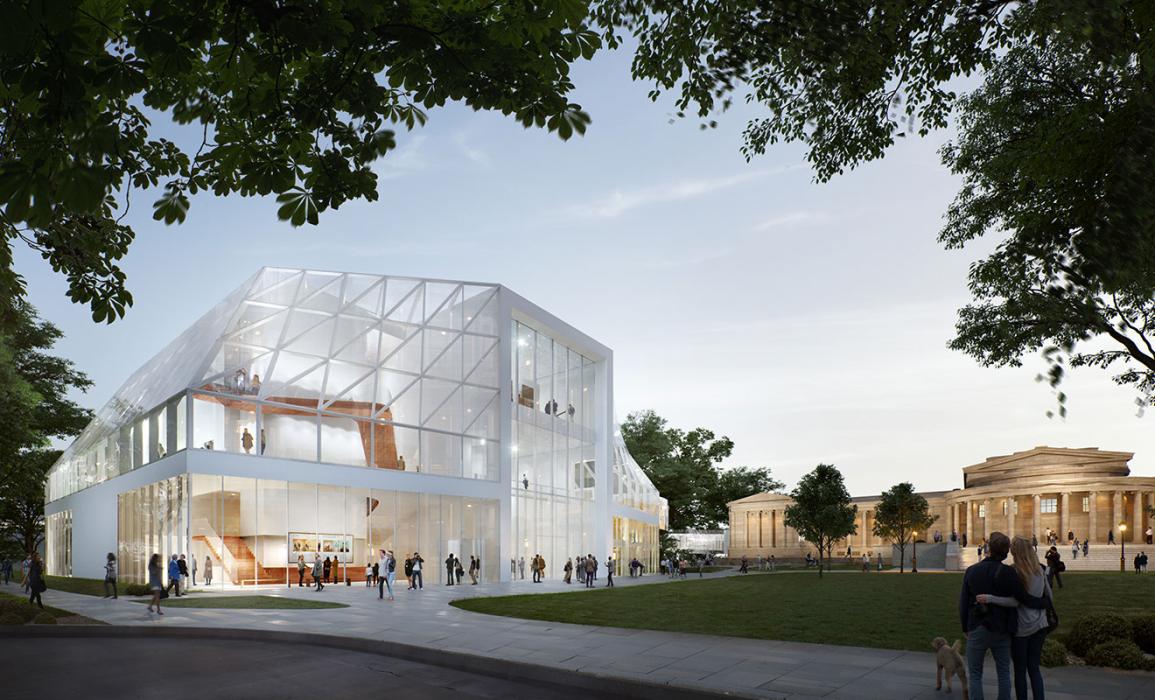Buffalo AKG Art Museum - Façade Engineering
The façade scope for the new Gundlach Building entails design of cladding, glazing and entrances, as well as interfaces, the John J. Albright Bridge connector, and new openings in the existing building.
Overview
The Buffalo AKG Art Museum, originally known as the Albright-Knox Art Gallery, recently underwent an ambitious $230 million campus redevelopment, doubling its exhibition space and restoring its existing structures. The Jeffrey E. Gundlach Building is designed to reconnect the historic Albright-Knox Gallery to the Olmstead-designed Delaware Park through the lightness and transparency of its glass exterior. The 91,000-square-foot building accommodates new programming and adds more than 30,000 square feet of gallery space to showcase contemporary and modern art of all scales and media.
We provided façade engineering and waterproofing services to OMA and Cooper Robertson for the Gundlach Building and the John J. Albright Bridge that connects it to the Wilmers Building.
Façade engineering Highlights
- The façade scope for the new addition entails design of cladding, glazing and entrances as well as interfaces with and new openings in the existing building and a bridge connector.
- All the glazing and cladding systems are detailed to meet more stringent interior temperature, relative humidity and lighting requirements in order to protect the fragile nature of the art contents as well as meet human thermal comfort requirements.
- The glazing systems are custom, stick built, aluminum, thermally broken, toggle systems that use insulated, laminated, low-e coated and argon infilled glass with warm edge spacers.
- The main feature of the new building is the “veil” consisting of a glazed steel diagrid that wraps the entire second and third floors. During the design phases, we worked with the Design Team to optimize geometry and preliminarily engineer the structure to reduce the complexity, helping to simplify fabrication and constructability while maintaining the design intent of slender profiles and small sightlines.
- Our recommendation to use faceted glass for the veil instead of hot and/or cold bent glass required by the original geometry resulted in an overall cost reduction.
- All the sloped glass at the veil has a custom digital frit that, combined with interior shading and HVAC, will help control solar heat gains and ensure human thermal comfort.
- In order to reduce the number and size of structural columns at the ground floor and at the bridge, the steel supporting the façade is also used as the structural system. The steel is designed by the SEOR and included on the structural drawings but fabricated and installed by the glazing contractor to meet the more stringent glazing tolerance requirements.
- The geometry of the veil required extensive snow/ice studies to ensure the final design minimizes the risk of falling snow/ice.


